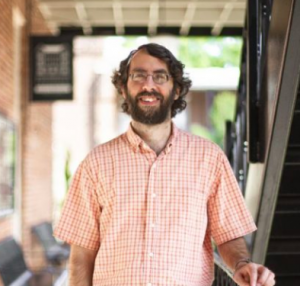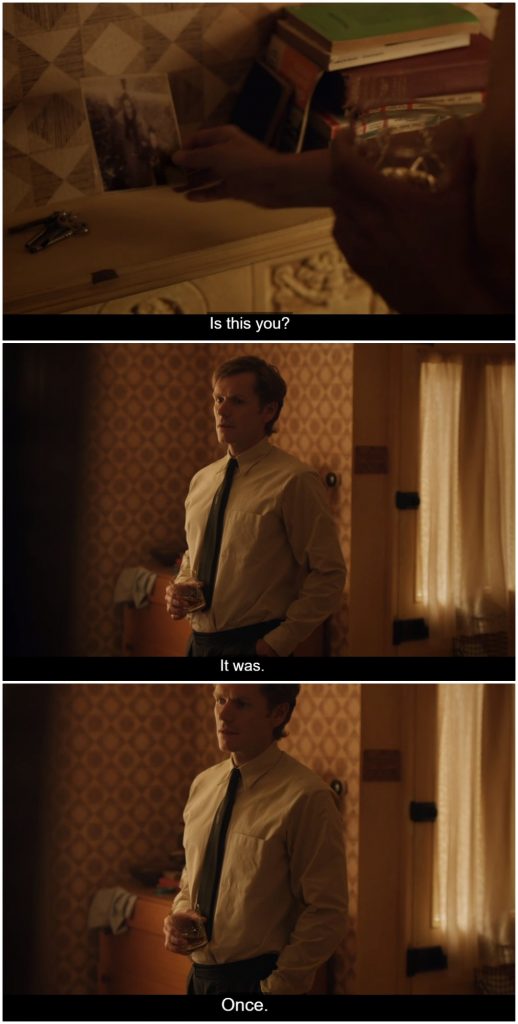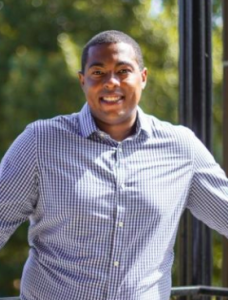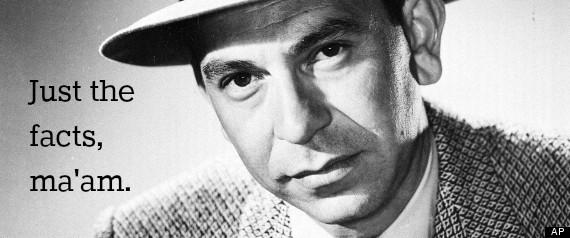
I was running the other day and this bumper sticker stopped me in my tracks. What do you think this means? How (or better yet, for whom) does this work?


A Peer Reviewed Blog

I was running the other day and this bumper sticker stopped me in my tracks. What do you think this means? How (or better yet, for whom) does this work?

“On the Spot” backs members of Culture on the Edge into a corner to talk about their backgrounds, their ongoing work, and what might be gained by an alternative understanding of how identity works.
 1. When people ask what you study, what do you tell them?
1. When people ask what you study, what do you tell them?
My short answer to this question has actually changed a bit in recent encounters. I used to answer by referencing my sub-field and saying something like, “I study American religions.” However, I now try to answer with something more like “I study religions in the US” or “I study religion in American culture.” While in some ways these statements seem quite similar, there is actually an important distinction. Over the years I have found that the former answer is pretty meaningless and confusing to non-specialists — What is an American religion anyway? — while the latter can be a bit more helpful in designating both the geographical space and the plurality of things that I might be examining. Some assumed that “American religion” was synonymous with Protestant Christianity, and so after underwhelming many a flight companion with my lack of biblical expertise, I started shifting my language to more accurately reflect what I think I do. The longer answer is that my research interests revolve around questions of religious diversity in contemporary US culture, including the ways in which concepts and practices of race, ethnicity, gender, sex, and embodiment affect the classification of human behaviors (e.g., as religious, spiritual, or secular). Continue reading “On the Spot with Martha Smith”

Click the image to see the movie trailer.
“On the Spot” backs members of Culture on the Edge into a corner to talk about their backgrounds, their ongoing work, and what might be gained by an alternative understanding of how identity works.
 1) When people ask what you study, what do you tell them?
1) When people ask what you study, what do you tell them?
Typically, I respond with the straightforward “Religions of India, like Hinduism and Islam” or “Religions of Asia.” While the answer prompts some people to talk about whomever they know who is from India or has visited India, the perceived exotic nature of India, Hinduism, and Islam means that fewer people are confident to start a lengthy discourse about India, as some people do if I simply answer “religion.”
2) How do questions of identity manifest in your research?
My initial intention was to study the difference between strict religious identifications and the fluidity of practice, as many in India participate in practices that we commonly identify with competing religions. Self-identified Hindus not only celebrate festivals with their co-workers and friends who identify as Muslim, but they also often pray for healing or assistance at Sufi shrines. Similarly, self-identified Muslims have cooperated with Hindus in both ritual and non-ritual practices, even serving as sponsors and performers in particular festivals. And the same dynamics play out among people who identify as Sikh, Jain, or Christian in many parts of India. Continue reading “On the Spot with Steven Ramey”

From “Endeavour.” Season 4, Episode 2.
“On the Spot” backs members of Culture on the Edge into a corner to talk about their backgrounds, their ongoing work, and what might be gained by an alternative understanding of how identity works.
 1. When people ask what you study, what do you tell them?
1. When people ask what you study, what do you tell them?
This is a fun question for me as a scholar and an advisor. Usually I tell people that I study “the anthropology of scriptures.” And as I tell students of religion preparing for job interviews, the response to the original question isn’t designed to satisfy so much as it is to peak the asker’s curiosity. I like to turn a point of information into a point of interest by pairing something presumably familiar (e.g. scriptures) with something presumably strange (e.g. anthropology). And in so doing, I hope to have provided an answer that is interesting enough that I’m granted the chance to elaborate.
If I’m successful at this, then I get to say how I’m interested in how and why some of the cultural texts people read also appear to read them back. We know people and social interests are at work in creating these media, yet we are also aware of instances where people relate to texts in and of themselves. What’s up with that? Quite a lot actually…. Continue reading “On the Spot with Richard Newton”
The following excerpt is from Sarah Imhoff’s contribution to the newly released volume Identity, Politics, and the Study of Islam: Current Dilemmas in the Study of Religions, with Culture on the Edge Books Series (Equinox Publishing).
The field of Jewish studies is full of Jews. This is obvious. It is also surprising, for two reasons. First, the diversity of Jewish studies scholars compares unfavourably with other religion-related fields. Islamic studies currently has a sufficient mix of Muslim and non-Muslim scholars to create a heated debate about epistemology, apology and the study of Islam. Jewish studies still has relatively few non-Jewish scholars of Judaism, although the number is growing. … While Islamic studies in American traces much of its history through Orientalism — non-Muslims studying Muslims and Islamic civilizations–the dominant narrative of Jewish studies begins with Jews studying Judaism. Although Jewish studies is my primary field, I have found that reflecting on Islamic studies has made me think more clearly about Jewish studies. I hope the reverse also proves true — that reflecting on Jewish studies will offer fruitful parallels with, as well as distinctions from, many of the larger issues at play in Islamic studies (121-122).
– Sarah Imhoff, “Jews, Jewish Studies and the Study of Islam”

In the course I’m TAing for (a Masters level American Religious History course), I was given the opportunity to give a class lecture. The professor wanted me to bring my own work and knowledge, given that the lecture material was related to my own area of study (Catholic immigration and nationalism in the US). While I have had the opportunity to lecture in the past (and design my own portion of the syllabus to then teach), this was the first time I taught material chosen by someone else. Continue reading “Teaching “Just the Facts””

When I was a kid, “Guess Who?” was a very popular game with me and my friends at my after school program. It was always a pretty quick game, which had friends gathered around while waiting for their chance to play the winner. Perhaps you recall the game — two players, each choose a yellow card, which had the picture of one of the faces on the board, and take turns guessing which card the other person has. While each of the pictures has a name on it, players can only ask yes or no questions about physical appearance: hair color, hair style, age, etc. Continue reading ““Guess Who?”: A Game of Differentiation”
During last year’s Gilmore Girls: A Year in the Life revival on Netflix, I kept hearing viewers basking in acknowledgment of a reference lost on me. In the scene, a wealthy and recently-widowed WASP declutters her mansion while wearing uncharacteristically casual clothes. The woman is in crisis and ready to make a change. She marshals some hired help to move large objects in her mansion while she scrutinizes the smaller items.
At one point she says, “If it brings you joy, you keep it. If it doesn’t, out it goes.”

Now I finally get it… Continue reading “Tidying Up Books and other Cultural Essentialisms”